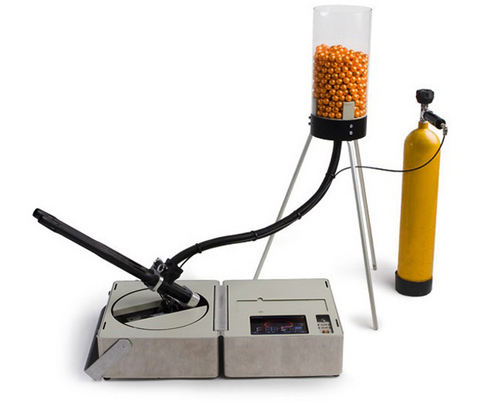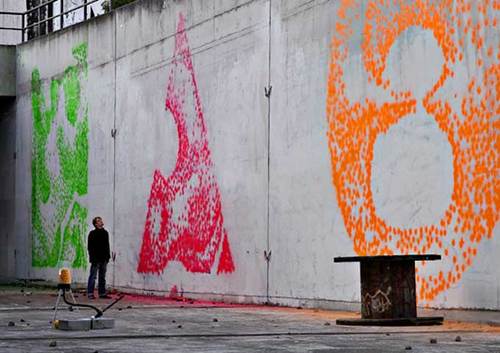- July 15, 2010
- Posted by Marc
Facadeprinter - An Introduction
facadeprinter.org - three stones from Facadeprinter on Vimeo.
facadeprinter.org - 5°Asalto Zaragoza from Facadeprinter on Vimeo.
The Facadeprinter is a simple, software controlled robot. It consits of a two axis turn table and an airpressure printhead. The printer shoots the artwork from a distanced position dot by dot onto the chosen area. Using this method, inaccessible and also uneven surfaces can be printed on. Buildings can be displayed without costly scaffolding.
The Facadeprinter is a large scale communication tool. Print-aesthetics and method are distinguishly different from conventional print- and advertising techniques. Artworks are applied directly onto walls, like the drawings of a ‘magic pen’. At present, the maximum print distance is 12 meters, the maximum print height is around 8 meters. The shooting frequency is up to 5 dots per second.
The printer is equipped with an industrial PC which is running the specially programmed printing software. The machine is operated by touchscreen. Artworks can be loaded from USB-devices in the file format SVG. With an integrated camera photos of the printing area can be taken and overlayered with a printing preview. This way position and scaling can be adjusted optimally on site. The distance to the wall is measured by infrared-meter and entered manually. The printing software calculates the driving coordinates regarding both the perspective and the ballistic distortion.
A paintball system was converted into a printhead to shoot the colour balls onto the wall. The two axis turn table places the paintball marker by steppermotors and gears. Before printing an integrated laser displays a bounding box of the artwork to verify the precise position on the wall. In case of malfunction or danger printing can be paused anytime.
A balltower conveys the gelatine encapsulated colour balls to the marker. Here they are accelerated to a speed of 200km/h and finally burst on contact with the wall, leaving their coloured contents. A colour dot of 5 to 10 cm diameter occurs on the wall. The busted gelatine shell falls down to the ground where it can be removed, or left to decompose naturally by the rain without residue. The colour qualities differ from each other gravely considering UV stability or dripping characteristics. So colours can be chosen which bleach out within a few hours or remains visible for several months.
More here.


